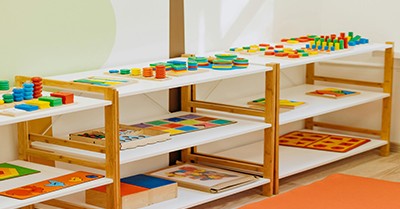The following article provides information on Strategies For Getting Educators Engaged In Planned Activities, Create A Simple, Visual Planning Board, Encourage Educators To Co-Create The Program and more.
Strategies For Getting Educators Engaged In Planned Activities
1. Foster Ownership and Collaboration
- Instead of assigning tasks, invite educators to co-create the program based on children's interests.
- Hold weekly brainstorming sessions where everyone contributes ideas for experiences.
- Use interest webs to visually map children's emerging interests and connect them to planned activities.
2. Make Planning More Accessible
- Create a simple, visual planning board where educators can see upcoming activities at a glance.
- Use digital tools (like shared documents or apps) to make planning more interactive and flexible.
- Offer quick-reference guides with easy-to-implement activity ideas.
3. Encourage Accountability and Reflection
- Set up peer check-ins where educators reflect on what worked and what could be improved.
- Use learning journals to document children's engagement and adjust plans accordingly.
- Celebrate successes—acknowledge when planned activities positively impact children's learning.
4. Align Activities with Educators’ Strengths
- Identify each educator’s passions and strengths (e.g., storytelling, outdoor play, sensory experiences), and let them lead activities in those areas.
- Rotate responsibilities so educators feel empowered rather than pressured.
5. Provide Support and Inspiration
- Share examples of engaging setups to spark creativity.
- Offer professional development on play-based learning and intentional teaching.
- Encourage educators to observe each other’s setups for inspiration.
Create A Simple, Visual Planning Board
A simple, visual planning board can help educators stay organized and engaged with planned activities. Here’s how you can create one:
1. Choose a Format
- Use a whiteboard with sticky notes for flexibility.
- Create a digital board using tools like Trello or Canva.
- Use a bulletin board with labeled sections for different activities.
2. Organize by Categories
- Daily Schedule – Outline key activities for the day.
- Child-Led Interests – Track emerging themes based on observations.
- Educator Responsibilities – Assign roles for setting up experiences.
3. Make It Interactive
- Use color-coded sections for different types of activities.
- Allow educators to add ideas and reflections throughout the week.
- Include visual prompts like photos or drawings to inspire setups.
4. Keep It Accessible
- Place the board in a common area where all educators can see it.
- Use simple language and visuals to make it easy to follow.
- Encourage weekly check-ins to update and adjust plans.
Encourage Educators To Co-Create The Program
Inviting educators to co-create the program based on children's interests fosters collaboration, engagement, and meaningful learning experiences. Here’s how you can implement this approach:
1. Collaborative Planning Sessions
- Hold weekly brainstorming meetings where educators share observations of children's emerging interests.
- Use interest webs to visually map connections between children's play and potential learning experiences.
2. Flexible and Responsive Programming
- Allow educators to adjust plans dynamically based on children's evolving interests.
- Encourage spontaneous learning moments rather than rigid schedules.
3. Shared Documentation and Reflection
- Create a digital or physical planning board where educators can contribute ideas.
- Use learning journals to track children's engagement and refine activities collaboratively.
4. Strength-Based Contributions
- Identify each educator’s passions and strengths (e.g., storytelling, outdoor play, sensory experiences), and let them lead activities in those areas.
- Rotate responsibilities so educators feel empowered rather than pressured.
5. Encouraging Child-Led Exploration
- Observe children's play and invite educators to build on their interests with relevant experiences.
- Provide open-ended materials that allow children to explore freely.
Further Reading
Setting Up Displays In An Early Learning Environment
Designing Engaging Outdoor Learning Spaces







 As an Educator in Australia, your pay rate falls under the Children’s Services Award 2010. This award states the minimum amount that an employer can
As an Educator in Australia, your pay rate falls under the Children’s Services Award 2010. This award states the minimum amount that an employer can When working as a qualified Early Childhood Teacher (with a university degree) within a service, your rate of pay will come from the Educational Services
When working as a qualified Early Childhood Teacher (with a university degree) within a service, your rate of pay will come from the Educational Services When working as a Diploma Qualified Educator your pay rate is from the Children's Services Award 2010. This Award states your minimum rate of pay
When working as a Diploma Qualified Educator your pay rate is from the Children's Services Award 2010. This Award states your minimum rate of pay When working as a Cert 3 Qualified Educator, your pay rate is from the Children's Services Award 2010. This Award states your minimum rate of
When working as a Cert 3 Qualified Educator, your pay rate is from the Children's Services Award 2010. This Award states your minimum rate of Educational Leaders play a crucial role in their early childhood service by ensuring that the educational program aligns with best practices and supports the holistic
Educational Leaders play a crucial role in their early childhood service by ensuring that the educational program aligns with best practices and supports the holistic In early childhood education and care, ratios are more than a technicality—they are a frontline safeguard. Every child deserves responsive supervision, emotional connection, and developmental
In early childhood education and care, ratios are more than a technicality—they are a frontline safeguard. Every child deserves responsive supervision, emotional connection, and developmental Here’s a comprehensive Mobile Phone and Smart Watch Policy tailored for early childhood education and care (ECEC) services in Australia, aligned with the latest 2025
Here’s a comprehensive Mobile Phone and Smart Watch Policy tailored for early childhood education and care (ECEC) services in Australia, aligned with the latest 2025 With the new national child safety reforms kicking in on 1 September 2025, early childhood services like yours have a real opportunity to lead the
With the new national child safety reforms kicking in on 1 September 2025, early childhood services like yours have a real opportunity to lead the The Sea of Fish Challenge is a national initiative that invites children, educators, families, and communities to create and display fish artworks as a symbol
The Sea of Fish Challenge is a national initiative that invites children, educators, families, and communities to create and display fish artworks as a symbol Across the early childhood education and care sector, educators are sounding the alarm: current staffing ratios are insufficient to deliver safe, meaningful, and developmentally appropriate
Across the early childhood education and care sector, educators are sounding the alarm: current staffing ratios are insufficient to deliver safe, meaningful, and developmentally appropriate


